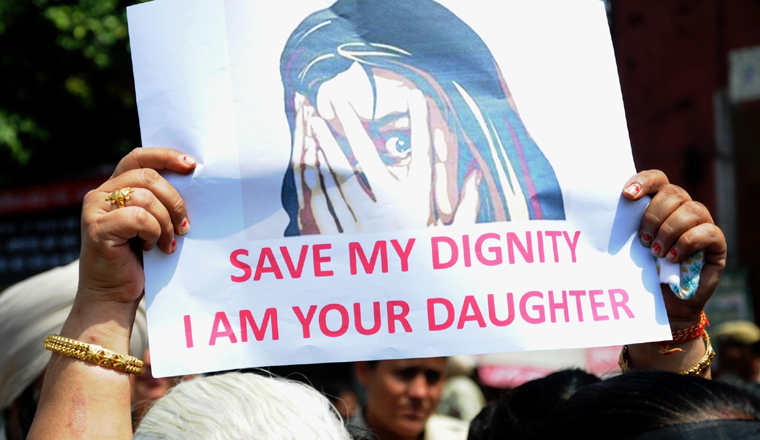When Nirbhaya was gang-raped in 2012, nationwide public outcry led to what appeared to be tighter laws that could check such crimes. But then we witnessed Kathua, a gruesome rape and murder of a child that was most abhorrent. And now the rape and murder near Hyderabad of a veterinarian may be an indication of how the tighter legislation may not be effective enough to control such crimes. If anything, the brutality involved in such cases may just be rising. In the incident near Hyderabad, the accused have obviously tried to erase evidence by burning the body of the victim. They did not just stop with rape and murder. The role of alcohol consumption in the entire episode cannot be underestimated. The police appear to have very little to actually go by other than circumstantial evidence and witness accounts that may be able to point to motive but not actually prove that the accused have indeed committed the crime. It will take forensic examination at multiple levels and other means of investigation to connect the dots, in addition to the accounts given by the witnesses in the case. In the Nirbhaya case, the biggest thing in favour of the investigation was the presence of an eyewitness to the crime. That is lacking in the Hyderabad case. Although the accused are reported to have confessed to the crime, it will take a while for the police to piece together all the evidence and convince the court that the accused had indeed committed the crime. Usually the accused admit everything under duress but in front of the Police which, according to Indian laws, do not hold water. Their admission of guilt will only have weight when it is in Court in front of a Magistrate with requisite powers to record statements.
The increasing media glare and protests all around are also likely to turn the case increasingly against the accused, given the possibility — however remote — that there could be other facets involved. The knee-jerk reactions from the government and many other quarters are to keep women confined to homes after dark. But it is a clichéd, band-aid solution being provided in the absence of more effective means. The country cannot dream of lighting every dark corner in the country or even a city for that matter. Such dark corners and people with such dispositions are bound to exist, however insensitive the statement may appear.
Interestingly, the Telangana Home Minister Mohd Mahmood Ali has stated that the victim, instead of calling her sister for help ought to have called Police at 100. Now that is an eye opener. The cops generally never respond and an emergency for people are never perceived as an emergency by the Police. This is not unique to Telangana, but is the same throughout the length and breadth of this country.
The moot point is the Indian man. Until men change, no laws would ever suffice. A remedy of sorts could be instant justice to the accused. Today, even those condemned to death, as in the Nirbhaya case, survive. The most brutal amongst them, a juvenile at the time of committing the crime, has been set free and is probably walking behind you on any street. With this kind of a disincentive, crime must seem pretty attractive to most such people.
The other angle and a very important one at that is the severe economic disparity that is easily observable in the Indian society. Majority of the population is deprived, depressed and mostly depraved. This is the largest chunk of this country’s population. Whether Nirbhaya or Kathua or the Hyderabad black spots, it is only when media blows it up that we all light candles or think of newer stricter laws. In reality, however, such rapes and many a times rape and eventual murder is a daily affair amongst the poorer sections of society. Bus or truck drivers, guards, coolies, construction workers, auto-rickshaw drivers and such types of elements have been the biggest perpetrators in most such cases.
The reality will have to be accepted first before solutions can be sought to the problem. It must not be forgotten that truckers in this country form a community that is used to promiscuity, given their conditioning and the odd kind of work hours they maintain. They are themselves people exposed to the insensitivity of the world and perhaps numbed to human subtleties and emotion; of course, exceptions do exist. It is not uncommon to see sex workers plying their trade at toll plazas in the dead of night. These are places which hold all ingredients for depravity to be let loose. This time it was a toll plaza, earlier it was inside a bus and in future it could be anywhere.
That does not justify any crime, but must be taken into account when looking for a solution that really works. It is not adequate to add more Sections to the existing laws and making them even more cumbersome. It may help for a while but in due course will yield even more to loopholes. Solutions will have to emerge through a multi-pronged approach. Women will need to become even more involved in work that is still held back from them owing to the rigours involved. Social conditions will need to be made more equitable so that people get equal opportunities and benefits. At present the involvement of the society in the upbringing of individuals is increasingly limited. For greater order in the society, the society will itself have to involve in nurturing individuals. But a work culture that keeps individuals from performing social functions is bound to compartmentalise people further and nurture inhuman instincts. The government will need to actively pursue measures that are aimed at creating a better society. Only a more sociable society can blunt the edge of hatred and crime.

